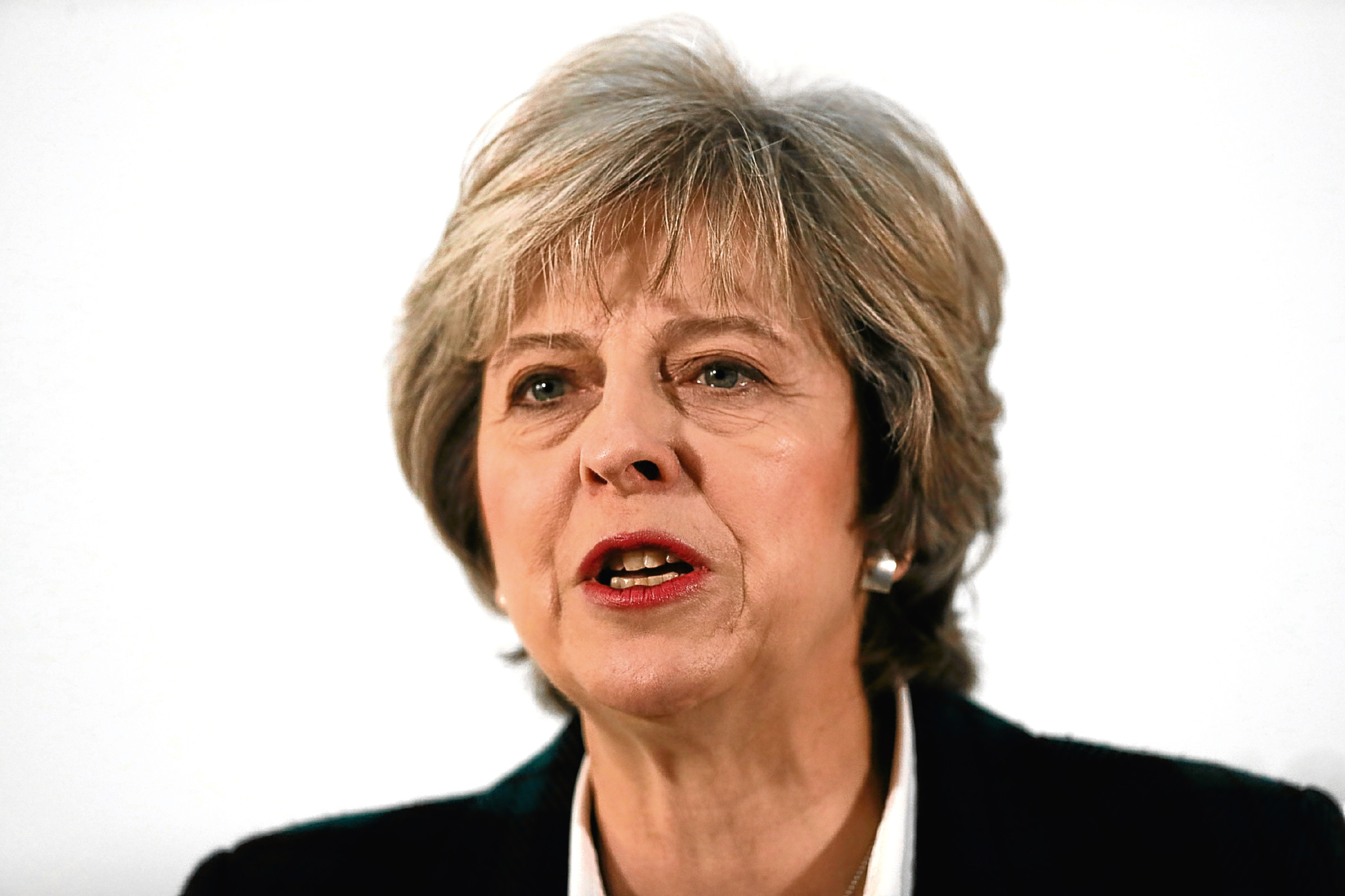Theresa May froze Scottish ministers out of the process to start the UK’s exit from the European Union on March 29, The Courier has learned.
Downing Street failed to tell Scottish ministers it would trigger Article 50 before making a public announcement, despite previous suggestions.
Senior sources close to Nicola Sturgeon confirmed they were given no notice of the imminent talks, despite a previous promise to be kept in the loop.
That is likely to infuriate Nationalists, particularly with debate still raging over a second independence referendum.
Mike Russell, the SNP’s Brexit minister, then appeared to confirm the impasse on Twitter.
Thank you @BBCNews for letting JMC members like me know that #Article50 is to be triggered next week. @GOVUK somehow forgot to inform us.
— Michael Russell (@Feorlean) March 20, 2017
Asked if the devolved governments had been informed this notification was being given on Monday, the Prime Minister’s official spokesman said: “We are informing you all essentially now.”
Pressed on whether a phone call was made to Ms Sturgeon before the briefing, he replied: “We don’t get into precise details of every conversation which we have.”
David Davis, the UK Government’s Brexit Secretary, hinted last week that the devolved administrations would get notice of the triggering of Article 50.
He told the Commons Brexit committee: “We will be having conversations with them beforehand”.
Stephen Gethins, the SNP’s Europe spokesman, said: “Today’s announcement that the Prime Minister will push ahead and unilaterally trigger Article 50 shatters beyond repair any notion or position that the Prime Minister is seeking a UK-wide agreement.
“For nine months since the EU referendum, there has been no attempt by the UK government to seek a meaningful discussion or agreement with the devolved administrations.”
John Lamont, the Scottish Conservative chief whip, accused the SNP of “hypocrisy” on the issue.
He said: “It finds any excuse to complain about a perceived slight.
“Yet it is only a week since Nicola Sturgeon announced her plans for an unwanted divisive second referendum out of the blue with no prior notice to anyone.”
A UK Government spokesperson said: “The UK has not yet invoked Article 50. We have always said we intended to do so before the end of March. All that has happened today is we have confirmed the precise date on which we intend to invoke, in response to mounting speculation.
“We are determined to negotiate for an outcome the works for every nation and region of the UK.”
The Prime Minister’s letter officially notifying the European Council of the UK’s intention to quit will set in train a two-year negotiation process expected to lead to Britain leaving the EU on March 29 2019.
Britain’s ambassador to the EU, Sir Tim Barrow, informed the office of European Council president Donald Tusk on Monday morning of the Prime Minister’s plans.
The announcement means that Mrs May will meet her self-imposed deadline of the end of March to get the withdrawal process under way.
She was cleared to take the step when the European Union (Notification of Withdrawal) Act gained royal assent last week, after a Supreme Court ruling forced her to seek the approval of both Houses of Parliament.
Mrs May will address MPs in a statement to the House of Commons following her regular weekly session of Prime Minister’s Questions on March 29.
Mr Tusk has previously said he expects to release an initial response to the Article 50 notification within 48 hours, and an extraordinary summit of the remaining 27 EU member states is due to be called within four to six weeks.
That summit will draw up a mandate for the European Commission’s chief negotiator, Michel Barnier, probably allowing talks to begin in earnest in May.
Notification of the historic step will come in the form of a letter from the Prime Minister to Mr Tusk, though Downing Street did not make clear whether this would be a physical letter handed to the European Council president by a UK representative or might be sent electronically.
It will be the first time that the provisions of Article 50 – which sets out the process for any EU member state “to withdraw from the Union in accordance with its own constitutional requirements” – have been activated.
Notification comes 279 days after the referendum of June 23 last year delivered a 52%-48% majority in favour of withdrawal.
Mrs May, who was visiting Swansea on Monday, is expected to conduct visits in all four nations of the UK before notification takes place.
The PM’s official spokesman said: “Earlier this morning, the UK Permanent Representative to the EU informed the office of Donald Tusk that it is the UK’s intention to trigger Article 50 on March 29.
“There will be a letter. She will notify President Tusk in writing. The Prime Minister will give a statement to Parliament as well.
“We have always been clear that we will trigger by the end of March and we have met that timetable.”
The spokesman said Britain wanted to start withdrawal negotiations “promptly”, but accepts that “it is right that the 27 have a chance to agree their position” before talks start.
